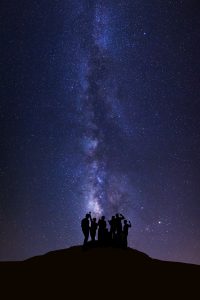Some of the well-known Christian mystics who focused on the Third Person include the Cappadocians (4th century), John Scotus Eriugena (810-877), Symeon the Theologian (949-1022), William of St. Thierry (1085-1148), Gregory Palamas (1296-1359), John Ruusbroec (1293-1381), Julian of Norwich (1342-1423), and Thomas Merton (1915-1968).
The Cappadocians (4th century)
The Cappadocian Fathers were three influential 4th century preachers and writers who helped to formulate the doctrine of the Trinity and who were particularly influential in contributing to our understanding of the Holy Spirit, the Third Person of the Trinity. Basil of Caesarea, Gregory of Nyssa, and Gregory of Nazianzus lived in what is now...
Read more ...
John Scottus Eriugena (810-877 CE)
Eriugena studied the works of the Cappadocians, Pseudo-Dionysius and his own Irish forebears such as St. Patrick (390-460) and St. Columbanus (543-615; founder of Iona). Eriugena felt that Nature itself is a sacred book. In fact, if it weren’t for the Fall of humans away from the Divine, the Gospels wouldn’t be needed. It would...
Read more ...
Two Orthodox Masters: Symeon the Theologian (C.E. 949-1022, CE), Gregory Palamas (1296-1359, CE)
Two mystical theologians who are honored by both the Latin and Orthodox churches are the Greek abbot Symeon the Theologian (C.E. 949-1022), and Gregory Palamas (C.E. 1296-1359). Both writers fall within the Eastern tradition that emphasizes the possibility of deification, divinization, and a complete interpersonal communion with God. The well-known formula to which both Symeon...
Read more ...
William of St. Thierry (1085-1148, CE)
William of St. Thierry, once abbot of the Benedictine monastery of St. Thierry in France, was a student and friend of the great Cistercian, St. Bernard of Clairvaux (1090-1153). William meditated deeply on the writings of St. Augustine, Gregory the Great, Origen, Gregory of Nyssa and John Scottus Eriugena. Following the latter’s work William sculpted...
Read more ...
John Ruusbroec (1293-1381)
John Ruusbroec was a Flemish priest and mystic. His great work, The Spiritual Espousals, is divided into three books that integrate the contemplative and active aspects of our lives. Living in a monastic environment, Ruusbroec loved solitude, and would often walk slowly onto the grounds of the cloister and into the surrounding forest, meditating and...
Read more ...
Julian of Norwich (1342-1423)
Julian of Norwich was an English visionary, an extraordinarily brave and creative woman, a spiritual counselor, and author who lived mostly in solitude. She was an anchoress, a holy woman associated with and supported by a parsonage. Julian lived alone in a small room in Conisford near the church of St. Julian and St. Edward,...
Read more ...
Thomas Merton (1915-1968)
Finally, we consider Thomas Merton’s view of the Holy Spirit and his unique integration of Christian and Zen language for the Third Person of the Trinity. Merton was a Trappist monk who lived at Gethsemani Abbey in Kentucky. He wrote and published his best-selling autobiography, Seven Storey Mountain in 1948--the mountain being the Mountain of...
Read more ...
